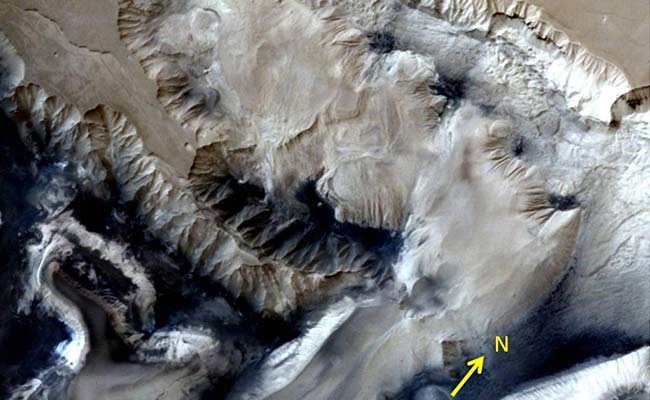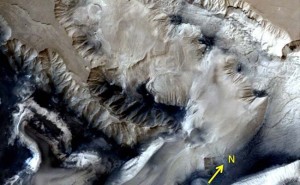
Ophir Chasma the largest canyon in the solar system

India’s Mars Orbiter Mission Mangalyaan celebrated its 69th Independence Day of India by sending home three-dimensional images of the Solar system’s largest Valles Marineris canyon on Mars. The picture captured with special Mars colour camera, at an attitude of 1154miles 1857km from the surface of the red planet Mars. The Valles Marineris canyon system is 3106.8 miles 5000 km long, 38.52miles 62 km wide, has many chasmas or valleys and is bordered by steep cliffs. The Mangalyaan has now the farthest travelling Indian space vehicle sending back copious data. Mangalyann which cost £ 441.279m INR 450 crores, a low cost mission that enable India to successfully place a spacecraft in orbit around Mars in its very first attempt on September 24, 2014, and become an elite club member of three, as only the US, Russia and Europe have successfully undertaken missions to Mars or its orbit.
Mangalyaan organised by the Indian space research organisation, so far took only 15 months and has covered 416.31 million miles, 670 million km to Mars on a 300-day marathon mission. In June 2015, the Indian space research organisation was awarded the Space Pioneer award for the year 2015 by the US National Space Society for Mangalyaan.
ISRO has plans to chart a 10-year map of planetary exploration which includes Venus and an asteroid, and repeat visits to Mars and the Moon.

